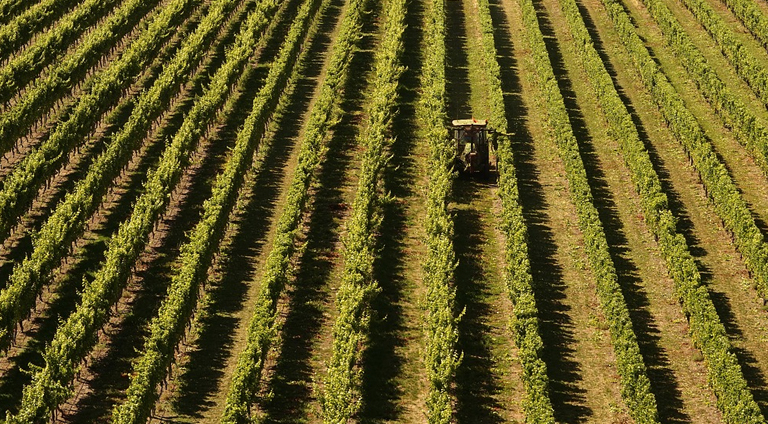
Not only is the moderate climate conducive for creating unique wines in San Luis Obispo, the type of earth that vintners work with is important as well. Millions of years ago when the Continental and Pacific plates crashed together, it uprooted a mix of marine fossils and sedimentary rocks. Limestone, sandstone, shale, and massive petrified oyster shells have been found in SLO’s vineyards with influential volcanic peaks surrounding the valleys.
In the geological world, these types of soils are regarded as relatively young, easily yielding to the firmer bedrock below. These attributes of the soil allow SLO’s grapevines to produce a fruit with an essential intensity and balance. The closer you get to the ocean, the more complex the soil composite becomes. Lower elevation vineyards often have access to deep, silty soils that create a concentrated flavor and color of the fruit. This allows certain vineyards a broad range of the variety of soils that they have to work with, directly translating to the diversity of grapes produced.
Top winemakers once remarked on how the region’s inimitable terroir has helped their wineries thrive. Mike Sinor of Sinor-LaVallee Wines stated that its proximity to the ocean and consistent marine conditions allow the fruit to develop full, rich flavors while also maintain complexity, structure and balance.
Michael Blaney from Baileyana Winery says that the mild climate allows the fruit to further ripen, developing an intense concentration within the grape’s skin. A winemaker at Center of Effort says that the sand dunes, fossilized shells, and marine shale left over from the ancient uplifted land allows for SLO vineyards to have one of the longest wine growing seasons globally. He believes that if the wine label says Edna Valley AVA that it’s a good sign because it means that it’s a product of the ocean and coming from a distinct winemaking region.
Don Othman from Kynsi Winery told Touring and Tasting magazine that there is definitely some volcanic influence to the winemaking process and at one time (probably millions of years ago), the SLO region offered beachfront property dotted with active volcanoes. The ensuing wines are rich in taste with outstanding floral attributes, spice components, and other distinguishable complexities.
Eric Johnson from Talley Vineyards added that Chardonnay and Pinot Noir are known to thrive in cool climates paired with marine sedimentary soils, producing varietals that maintain their acidity. The end product is a Talley Vineyards Chardonnay that’s crisp and lemony while its red wine is complex and full-bodied.

Local field research efforts regularly go out and study the soils to determine the varietal selections and root stock that is best adaptable to its growing conditions, markets, and climate. Local viticulturists use this soil management research (along with certain irrigation, canopy, and pest control techniques) to best determine how to use their natural resources effectively to produce the best wines of the Central Coast.
